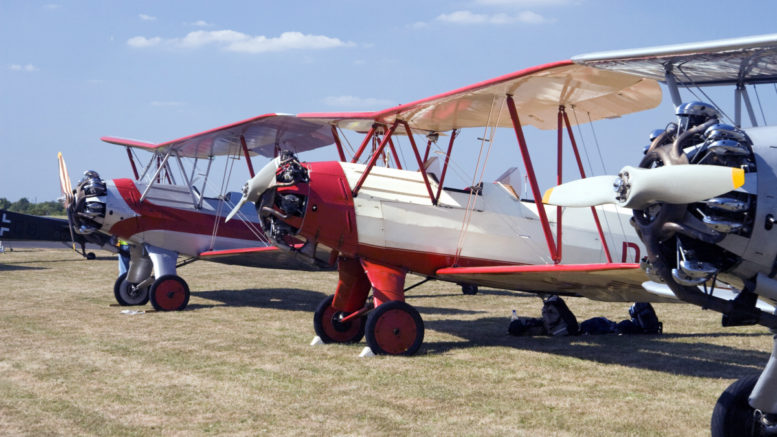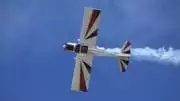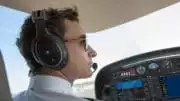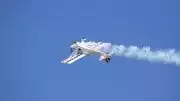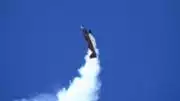Stunt planes are designed differently from regular planes to perform maneuvers. The aircraft design for stunt planes involves making compromises to achieve different aerobatic maneuvers.
One primary reason behind the unique design of aerobatic planes is that they will be inverted during an airshow performance. Regular planes are created to fly right up, and inverting a plane will affect the forces of flight, making stunt aircraft design of utmost importance.
The Four Forces of Aircraft Design Flight
Four forces act upon a plane: lift, drag, weight, and thrust. These forces keep a plane flying on a straight and level flight when balanced. However, to perform maneuvers, the plane has to be designed differently.
Of the four forces, drag and weight are the natural forces that act upon an object. But lift and thrust are necessary for aerobatic flight. Because of the rolls, loops, and breaks that encompass aerobatic flying, lift and thrust in stunt planes work differently than in regular planes. Compromises have to be made to realize these forces.
Weight
Weight or gravity is the downward force that pulls down an object. The weight is a result of the object’s mass, and for a plane, it is distributed around and includes the cargo, fuel, luggage, and people. The total weight of an aircraft will vary during flight because of the change in the amount of fuel consumed. Stunt planes need light to perform maneuvers; usually, a stunt pilot doesn’t carry any load.
Lift
Lift is the upward force acting upon a plane, and most of this force is created by the wings. It keeps an airplane in the air and prevents it from falling. A plane needs a lift to overcome weight. There are different explanations for how lift occurs, but the prominent ones are Newton’s third law of action and reaction and the Bernoulli theorem.
Swiss mathematician Daniel Bernoulli’s law, says that the pressure of a fluid decreases as its velocity increases. A conventional wing is curved at the upper surface of the airfoil and flat on the lower surface, and because of the curvature, the air traveling above is faster than the air traveling below the wing. This means there is lower pressure above and this generates lift.
On the other hand, Newton’s third law states that there is an equal and opposite reaction for every action. This law will explain that the wing’s downward push results in a push upward, generating lift.
Drag
Drag is the backward force that slows down a plane. It is also called air resistance. The air resists objects the same way water resists when you try walking or swimming through it. Friction and differences in air pressure can cause drag.
Thrust
Thrust is the forward force acting upon a plane. It is created by the propeller in an airplane and is opposed by drag.
The Importance of Proper Aircraft Design
Airfoil for Lift
The shape of the stunt plane wing is essential in performing stunts because aerobatic planes sometimes fly inverted. The standard aircraft wing design (cambered wings), which has a curved upper surface and a flat lower surface, will not work best for an inverted plane.
Both sides of the wings are curved to generate lift in a stunt plane. This type of wing design is referred to as a symmetrical design. The symmetric or uncambered design of the stunt plane airfoil permits it to fly in both the regular and inverted position.
Propellers for Speed
An aircraft propeller is an aerodynamic device that converts rotary energy into a propulsive force to move a plane forward. The propulsive force creates thrust.
Aerobatic planes are designed with a fixed-pitch propeller or constant-speed propeller. The pitch is the angle at which the blade cuts through the air. The fixed-pitch propeller is light and straightforward, but it is limited because its angle of attack cannot be changed during flight. The first planes were designed with this propeller type.
A constant-speed propeller is designed to change its blade pitch automatically to maintain constant RPM (revolutions per minute) under varying altitudes. A propeller governor controls it, so the pilot doesn’t have to take any action. However, the pilot can control power using the throttle.
More recently, aerobatic aircraft have been designed using constant-speed propellers instead of fixed-pitch propellers because it gives maximum output.
Inverted Fuel and Oil System
Another aircraft design that makes stunt possible is the inverted fuel and oil system. Gravity will pull the weighted end of the hose to the top of the tank, cutting off the fuel supply. If the fuel in a plane is cut off, it can no longer fly, which will be the case if regular planes try performing inverted maneuvers.
To counter the effect of gravity, stunt planes are designed with inverted fuel and oil systems that use fuel injection instead of a carburetor. To ensure the free flow of fuel, aerobatic planes with fuel tanks in the fuselage have flexible hoses called flop tubes with a weight on the free end plugged into the tank.
But when the fuel tanks are in the wings, they have small header tanks that feed the fuel to the engine, whether the plane is inverted or not. Similarly, an oil pickup line is fixed near the top of the engine and in the oil, sump to ensure that oil is available in any attitude.
Other Factors in Aircraft Design
Spades for Aileron rolls
Aerobatic planes are also designed with aileron spades to help in performing aileron rolls, an aerobatic maneuver. The aileron roll is achieved when the stunt plane performs a full 360 degrees turn along its longitudinal axis.
The aileron spade has a shovel-like shape and is mounted on the arms of the aileron. It provides the aerodynamic balance needed for the aircraft to roll. The purpose of aileron spades is to increase the roll rate by deflecting a lot of air without significantly disrupting the airflow over the wing.
The spade is shaped and sized to ensure maximum effect. For example, larger ailerons are more easily susceptible to flutter at high speeds, so counterweights and counter surfaces are designed to prevent this.
The Bottom Line of Aircraft Design
Although the history of aerobatics can be traced as far back as September 1913, aerobatic flying has seen various transformations and the need to design stunt planes to enable unusual maneuvers specifically.
Due to the peculiarities of aerobatics, stunt planes are designed for precision, and speed, to enable the four forces of flight and to meet other needs of aerodynamics.
Ready to Soar with Us?

